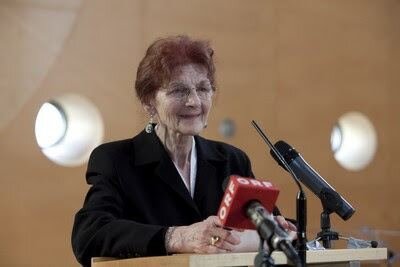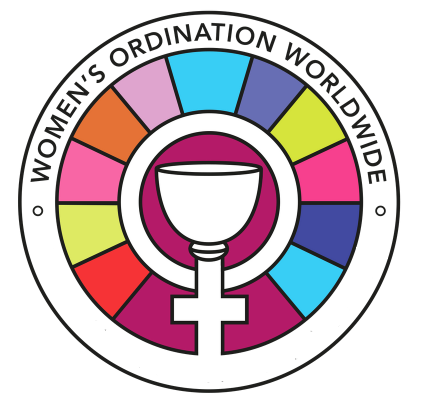St. Thérèse of Lisieux - Patron Saint of Women's Ordination - Celebrating Her Birthday January 2
/Thérèse of Lisieux, Patron Saint of Women’s Ordination, Celebrating the Day of Her Birth
Thérèse of Lisieux - patron saint of women’s ordination
- born Marie Françoise-Thérèse Martin
- lived 2 January 1873 – 30 September 1897
- nun, theologian, playwright, writer
- struggled with exclusion for her call to priesthood
- the greatest saint of modern times according to Pope Pius X 1, 2
- in the official church, she is patron of missionary priests, HIV/AIDS sufferers, florists and gardeners
feast day: October 1
- proclaimed 3rd female Doctor of the Church in 1997
Therese of Lisieux, patron saint of women’s ordination
Thérèse of Lisieux dressed as imprisoned Joan of Arc. Photograph taken by her sister Celine.
The patron saint of women’s ordination, Thérèse of Lisieux was born on this day, January 2 in 1873. A French Carmelite nun, she is officially honoured as saint and third woman Doctor of the Church. She is celebrated as the Little Flower for her Little Way — her genuine commitment to manifesting God’s love in the tasks and people we meet in everyday life. 3 She made the simple things of life the seedbed of her sanctity.
But she is much more than this. Church Fathers would have us believe that Thérèse was a demure, sweet, and delicate child. The truth is that she admired Judith of the Old Testament, the warrior Joan of Arc, and she (Thérèse) is one of the first women of modern times to declare her calling to priesthood. She wrote about it and her inner identification with the archetypes of warrior, priest, apostle and martyr. 4
I sense in myself the vocation of Warrior, Priest, Apostle, and Martyr. In the heart of the Church, my Mother, I will be love. 5
—St. Thérèse of Lisieux
Her yearning to be a priest is well documented. Her journals record it. She confided in her sister Céline about the calling. At a young age, Thérèse wrote: ‘I feel in me the vocation of PRIEST; with what love I would carry you in my hands when, at my words you would descend from Heaven.’ 6 She was convinced that she would have been a good preacher and even better than the priests she heard. On her sickbed she composed what she would say from the pulpit. 7
Thérèse of Lisieux preparing ciborium for mass
In testimonies from the process of her beatification there is a detailed statement from Céline. She shared that Thérèse preferred death to the continued painful endurance of living with her unfulfilled call. Thérèse believed God had let her become sick so she would not have to suffer rejection by the Church from priesthood. In her testimony, Céline said:
‘… before she was really ill, Sister Thérèse told me she expected to die that year. ... When she realised that she had pulmonary tuberculosis, she said: 'You see, God is going to take me at an age when I would not have had the time to become a priest ... If I could have been a priest, I would have been ordained at these June ordinations. So, what did God do? So that I would not be disappointed, he let me be sick: in that way I couldn't have been there, and I would die before I could exercise my ministry.' 8
‘The sacrifice of not being able to be a priest was something she always felt deeply. During her illness, whenever we were cutting her hair she would ask for a tonsure [the practice of shaving the crown of the head that was part of the ritual of ordination until it was abandoned by papal order 9 in 1972] ... But her regret did not find its expression merely in such trifles; it was caused by a real love of God, and inspired high hopes in her. The thought that St Barbara had brought communion to St Stanislas Kostka thrilled her. 'Why must I be a virgin, and not an angel or a priest?' she said. 'Oh! what wonders we shall see in heaven! I have a feeling that those who desired to be priests on earth will be able to share in the honour of the priesthood in heaven.' 10
The thought of priesthood preoccupied Thérèse to the end of her life. It is moving that while dying, she wrote of St. Barbara bringing communion to St. Kostka in heaven revealing that Thérèse knew the obstacle for her was one created by men and not God. 11
Too often Thérèse’s call is written out of her story. Today we honour her not so little impact as a courageous voice for women and her fierce love for God. Women are called to priesthood. It is our work to amplify their voices and to work for their welcome in the official Church. In Thérèse’s memory, we reflect on the great loss and scandal caused by the institutional Church turning away so many of God’s servants only because they are women.
Women are called to priesthood. It is our work to amplify their voices and work for their welcome in the official Church. In Thérèse’s memory, we reflect on the great loss and scandal caused by the institutional Church which has turned away so many of God’s servants only because they are women.
The people of the Church have welcomed the ecclesial and sacramental gifts of women and benefit from their ministries on the margins. We pray for Church leaders to open the doors to dialogue with women called to priesthood and to support them as equals. We know that God does not discriminate. If the Roman Catholic Church claims to follow Jesus, it must free itself from the sin of sexism and practice radical inclusion just as he did.
Thérèse of Lisieux
The continuing exclusion of women from ordained ministries and decision-making roles in the Catholic Church is an injustice that hurts all of us. It is the sin of sexism and is offensive to God. We must speak out for inclusive leadership in our institutions and empower women to live their authentic callings. We speak out our concern for all priests… including the ones the Vatican won’t yet recognise only because they are women.
St. Thérèse — pray for us, for our work, for all women who struggle with callings to priesthood, and for the women who, in the face of continued Vatican intransigence have prophetically moved forward to action their callings to priesthood on earth now.
St. Thérèse - pray that our Church leaders will be emboldened to decisively take action to end sexism in the Church and start walking with us as equals.
Amen!
-Therese Koturbash, Women’s Ordination Worldwide Communications Team
Therese Koturbash, BA, LLB, GDCL served as Canadian Delegate to Women’s Ordination Worldwide from 2008 to 2013. For all five of those years, she was elected member of WOW's four person International Leadership Circle. She has also been the National Coordinator of Canada's Catholic Network for Women's Equality. Today, Therese serves on WOW’s Communications Team and is a volunteer with WOW member group, Wijngaards Institute for Catholic Research. Her paid work is as a family attorney.
For more about St. Therese of Lisieux, see here: Catherine Broome, OP, The Priestly Vocation of Therese of the Child Jesus: Spirituality (1997), pp. 225-230 found on the website of our member group www.womenpriests.org
———————————————————————————-
1. Descouvemont, Pierre; Loose, Helmuth Nils (1996). Thérèse and Lisieux. Toronto: Novalis. p. 5
2. John Paul 11 (19 October 1997). "Angelus - Proclamation of St Thérèse of the Child Jesus and the Holy Face as a "Doctor of the Church"". vatican.va: Libreria Editrice Vaticana.
3. St. Therese and Her Little Way, https://www.littleflower.org/therese/reflections/st-therese-and-her-little-way/
4. Broome, Catherine, OP, The Priestly Vocation of Therese of the Child Jesus: Spirituality (1997), pp. 225-230
5. St. Therese of Lisieux: Story of a Soul, 8 Sept 1896.
6. ibid.
7. op. cit. Broome.
8. St. Thérèse of Lisieux by Those Who Knew Her: Testimonies from the Process of Beatification, ed. and trans. by C. O'Mahony, OCD (Dublin, 1975) pp155-6 as quoted in The Ordination of Women in the Roman Catholic Church, by Eric Doyle OFM
9. tonsure - https://en.wikipedia.org/wiki/Tonsure
10. Op. cit. C.O’Mahony
11. Broome, Catherine, OP, The Priestly Vocation of Therese of the Child Jesus: Spirituality (1997), pp. 225-230.








